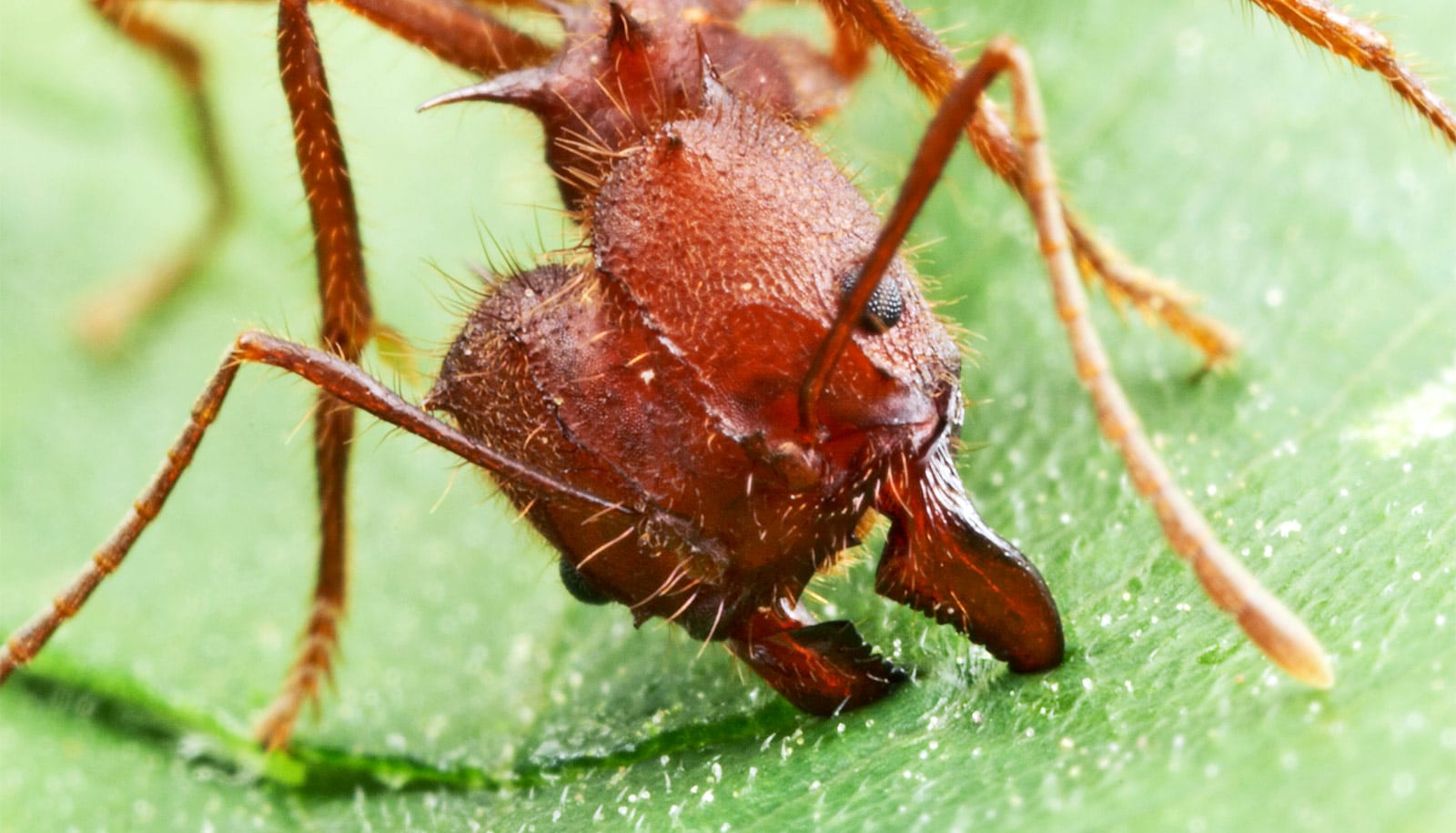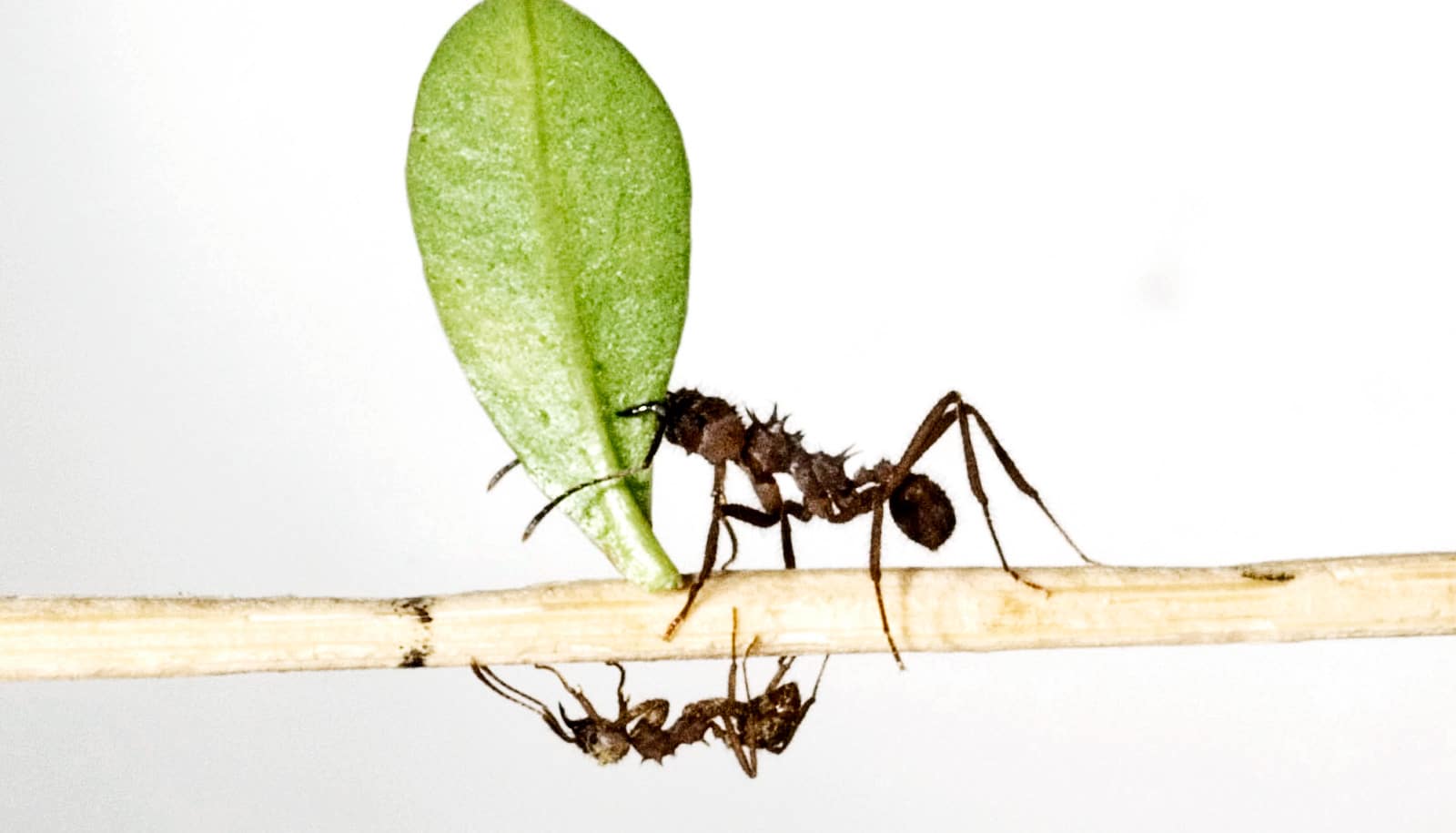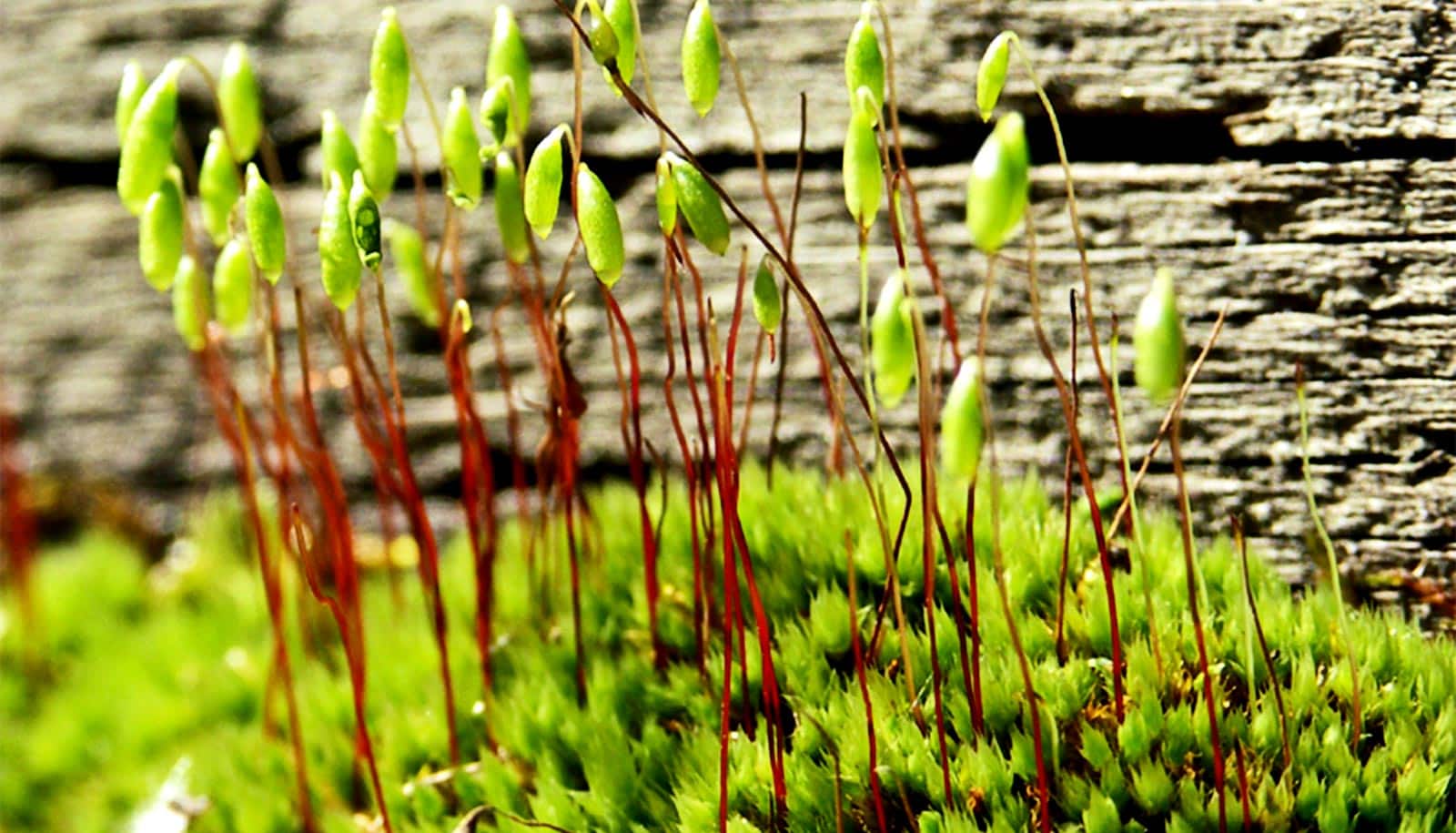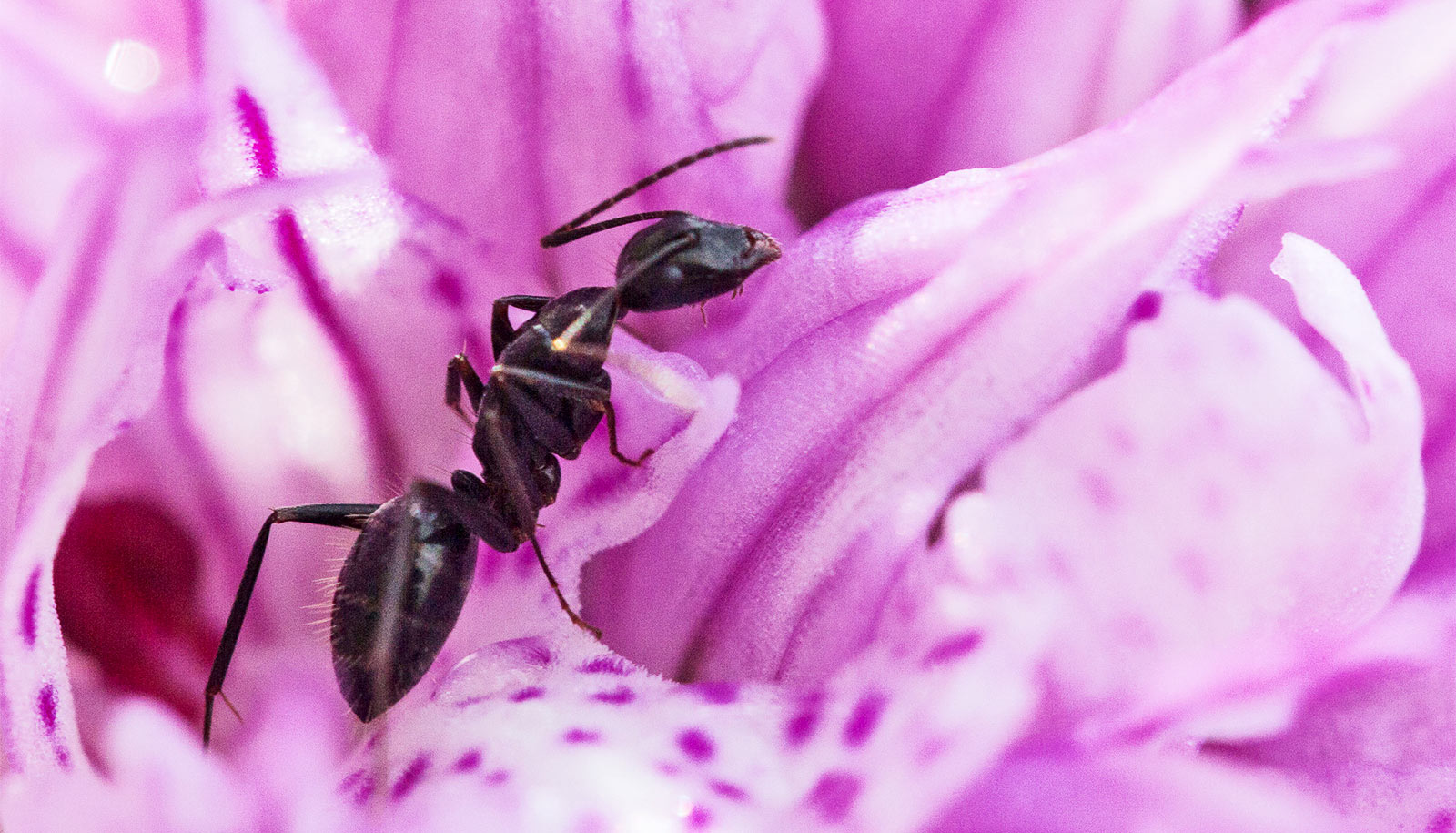Ants have been farmers for tens of millions of years—and a new study shows they might have overcome key domestication challenges that humans have yet to solve.
Fungus-farming ants are an insect lineage that relies on farmed fungus for survival. In return for tending to their fungal crops—protecting them against pests and pathogens and providing them with both stable growth conditions in underground nests and nutritional “fertilizers”—the ants gain a stable food supply.
These fungus farming systems are an expression of striking collective organization honed over 60 million years of fungus crop domestication. The farming systems of humans pale in comparison, since they emerged only around 10,000 years ago.
“Ants have managed to retain a farming lifestyle across 60 million years of climate change, and leafcutter ants appear able to grow a single cultivar species across diverse habitats, from grasslands to tropical rainforest,” says Jonathan Z. Shik, an assistant professor at the University of Copenhagen’s biology department and a coauthor of the new paper in the journal Nature Ecology & Evolution.
Through fieldwork in the rainforests of Panama, Shik, and researchers from the Smithsonian Tropical Research Institute, studied how fungus-farming ants use nutrition to manage a tradeoff between the cultivar’s increasingly specialized production benefits, and its rising vulnerability to environmental variation.
Subterranean growing chambers
We humans have bred certain characteristics—whether a taste or texture—into our crops. But these benefits of crop domestication can also result in greater sensitivity to environmental threats from weather and pests, requiring increasing pesticide use and irrigation. Simply put, we weaken plants in exchange for the right taste and yield.
“The ants appear to have faced a similar yield-vulnerability tradeoff as their crops became more specialized, but have also evolved plenty of clever ways to persist over millions of years. For example, they became impressive architects, often excavating sophisticated and climate-controlled subterranean growth chambers where they can protect their fungus from the elements,” Shik says.
Furthermore, these little creatures also appear able to carefully regulate the nutrients used to grow their crops.
To study how, Shik and colleagues spent over a hundred hours lying on rainforest floor on trash bags next to ant nests. Armed only with forceps, they stole tiny pieces of leaves and other substrates from the jaws of ants as they returned from foraging trips.
They did this while snakes slithered through the leaf litter and monkeys peered down at them from the treetops.
“For instance, our nutritional analyses of the plant substrates foraged by leafcutter ants show that they collect leaves, fruit, and flowers from hundreds of different rainforest trees. These plant substrates contain a rich blend of protein, carbohydrates, and other nutrients such as sodium, zinc, and magnesium. This nutritional blend can target the specific nutritional requirements of their fungal crop,” Shik says.
Ant farmers perfect the art of organic growing
Over the years, the ants have adapted their leaf collecting to the needs of the fungus—a kind of organic farming, without the benefits of the technological advances that have helped human farmers over the millenia, one might say.
Which leads to the question: is it possible to simply copy their ingenious methods?
“Because our plant crops require sunlight and must thus be grown above ground, we can’t directly transfer the ants’ methods to our own agricultural practices,” Shik says.
“But it’s interesting that at some point in history, both humans and ants have gone from being hunter-gatherers to discovering the advantages of cultivation. It will be fascinating to see what farming systems of humans look like in 60 million years.”
An ERC starting grant funded the work.
Source: University of Copenhagen



